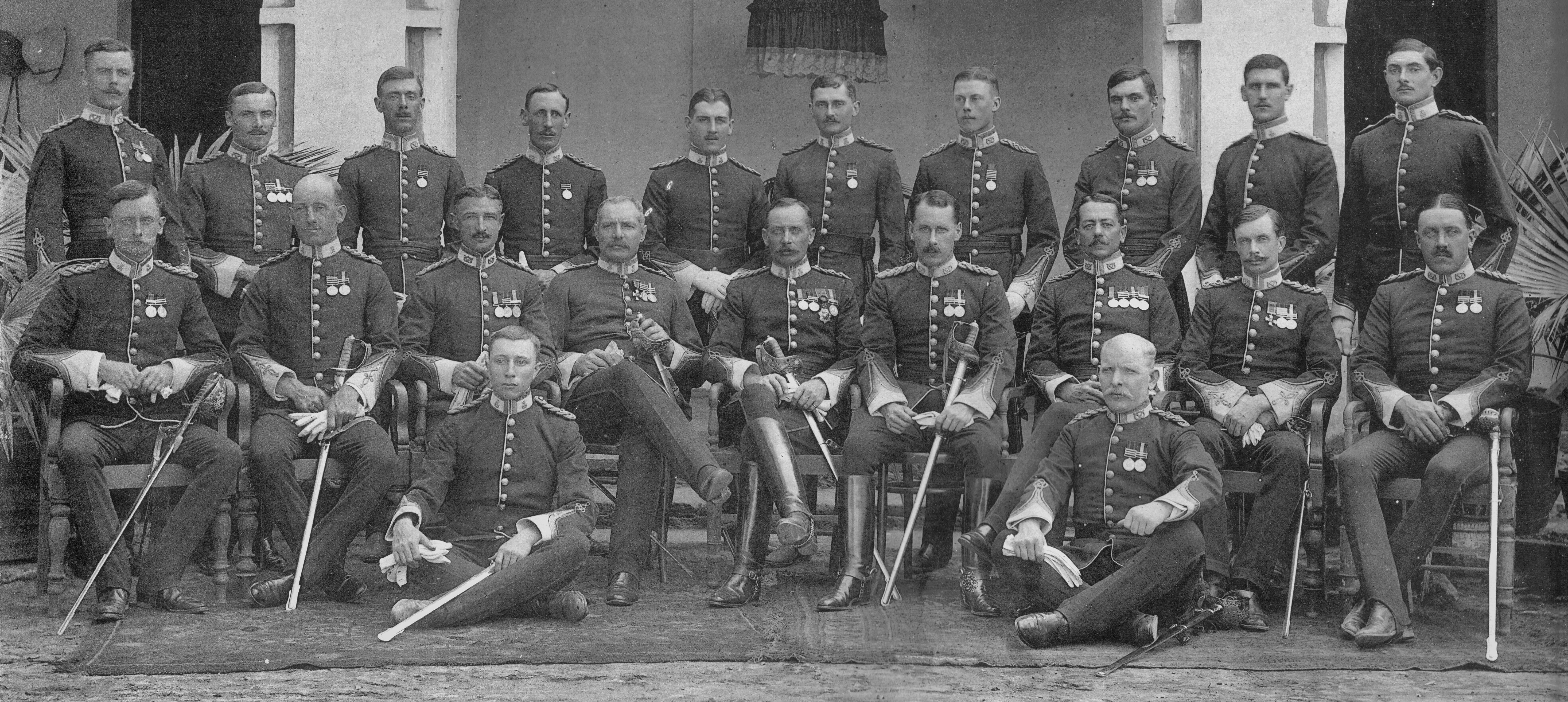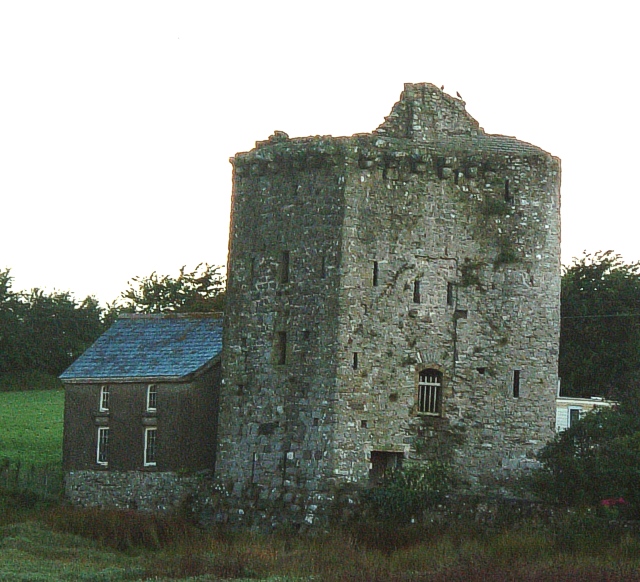|
Egerton Bagot Byrd Levett-Scrivener
Captain Egerton Bagot Byrd Levett-Scrivener (1857–1954) was a Royal Navy Flag Lieutenant and aide to Vice Admiral George Willes in the Far East. He was later promoted to Captain, and following his retirement became Bursar of Keble College, University of Oxford. Born Egerton Levett, he changed his name to Levett-Scrivener on an inheritance from his aunt of Scrivener family properties at Sibton Abbey, Suffolk, which he later managed. Levett was married to the daughter of English diplomat and ambassador Sir Harry Smith Parkes. Egerton Levett was the son of Col. Richard Byrd Levett of Milford Hall, Staffordshire and his wife Elizabeth Mary (Mirehouse) Levett. Egerton Levett entered the service of the Royal Navy, where during a posting as aide to Admiral Willes in 1884, he met Mabel Desborough Parkes, the daughter of Ambassador Parkes, who was then serving as British ambassador to China and Korea. Levett and Miss Parkes were married in 1884, and in 1885 their son Evelyn Harry Byrd ... [...More Info...] [...Related Items...] OR: [Wikipedia] [Google] [Baidu] |
Keble College, Oxford (472712547)
Keble College () is one of the constituent colleges of the University of Oxford in England. Its main buildings are on Parks Road, opposite the University Museum and the University Parks. The college is bordered to the north by Keble Road, to the south by Museum Road, and to the west by Blackhall Road. Keble was established in 1870, having been built as a monument to John Keble, who had been a leading member of the Oxford Movement which sought to stress the Catholic nature of the Church of England. Consequently, the college's original teaching focus was primarily theological, although the college now offers a broad range of subjects, reflecting the diversity of degrees offered across the wider university. In the period after the Second World War, the trends were towards scientific courses (proximity to the university science area east of the University Museum influenced this). As originally constituted, it was for men only and the fellows were mostly bachelors resident ... [...More Info...] [...Related Items...] OR: [Wikipedia] [Google] [Baidu] |
Common Serjeant Of London
The Common Serjeant of London (full title The Serjeant-at-Law in the Common Hall) is an ancient British legal office, first recorded in 1291, and is the second most senior permanent judge of the Central Criminal Court after the Recorder of London, acting as deputy to that office, and sitting as a judge in the trial of criminal offences. He is also one of the High Officers of the City of London Corporation, and must undertake certain civic obligations alongside his judicial duties: each Midsummer he presides at the election of Sheriffs in the Guildhall, and each Michaelmas he plays a key role in the ceremonial election of the Lord Mayor. He presents the Sheriffs to the King's Remembrancer at the annual Quit Rents ceremony, and is in attendance on most other major ceremonial occasions. The Common Serjeant is appointed by the monarch on the recommendation of the Lord Chancellor. Formerly, the Common Serjeant of London was a legal officer of the City Corporation of Londo ... [...More Info...] [...Related Items...] OR: [Wikipedia] [Google] [Baidu] |
Captain
Captain is a title, an appellative for the commanding officer of a military unit; the supreme leader of a navy ship, merchant ship, aeroplane, spacecraft, or other vessel; or the commander of a port, fire or police department, election precinct, etc. In militaries, the captain is typically at the level of an officer commanding a company or battalion of infantry, a ship, or a battery of artillery, or another distinct unit. The term also may be used as an informal or honorary title for persons in similar commanding roles. Etymology The term "captain" derives from (, , or 'the topmost'), which was used as title for a senior Byzantine military rank and office. The word was Latinized as capetanus/catepan, and its meaning seems to have merged with that of the late Latin "capitaneus" (which derives from the classical Latin word "caput", meaning head). This hybridized term gave rise to the English language term captain and its equivalents in other languages (, , , , , , , , , kapitány, K ... [...More Info...] [...Related Items...] OR: [Wikipedia] [Google] [Baidu] |
Yoxford
Yoxford is a village in East Suffolk, England, close to the Heritage Coast, Minsmere Reserve (RSPB), Aldeburgh and Southwold. It is known for its antique shops and (as "Loxford") for providing the setting for a Britten opera. The name 'Yoxford' comes from Old English ''geoc-ford'' meaning 'yoke ford' probably indicating that the ford was wide enough for a yoke of oxen to pass through. Location and governance Yoxford, some north-east of London and north-east of Ipswich, is surrounded by the parkland of three country houses, in an area known as the Garden of Suffolk. It takes its name from a ford across the nearby River Yox, where oxen could pass. The village includes the junction of the A12 trunk road and the A1120. Before 1 April 2019, its electoral ward in the Suffolk Coastal district bore the same name, but the village is now within the enlarged ward of Yoxford and Kelsale, in the East Suffolk district. At the 2011 census, the previous ward's population was 1901. F ... [...More Info...] [...Related Items...] OR: [Wikipedia] [Google] [Baidu] |
Scrivener Monument St Peter's Church Sibton Suffolk
A scrivener (or scribe) was a person who could read and write or who wrote letters to court and legal documents. Scriveners were people who made their living by writing or copying written material. This usually indicated secretarial and administrative duties such as dictation and keeping business, judicial, and historical records for kings, nobles, temples, and cities. Scriveners later developed into public servants, accountants, lawyers and petition writers, and in England and Wales, scrivener notaries. Current role Scriveners remain common in countries where literacy rates remain low, for example India; they read letters for illiterate customers, as well as write letters or fill out forms for a fee. Many now use portable typewriters to prepare letters for their clients. In areas with very high literacy rates, they are far less common; however, social services organizations, libraries, and the like sometimes offer assistance to service users with low literacy skills to help ... [...More Info...] [...Related Items...] OR: [Wikipedia] [Google] [Baidu] |
Berkswich
Berkswich ( ) is a civil parish in the borough of Stafford in Staffordshire, England. According to the 2001 census it had a population of 1,528, being recalculated as 2,010 at the 2011 Census. Berkswich Civil Parish should not be confused with Berkswich Church of England Parish in the Lichfield Diocese as they cover differing geographical areas. Berkswich Civil Parish covers the villages of Walton-on-the-Hill and Milford. Berkswich Church of England Parish covers those villages along with Baswich, Weeping Cross and Wildwood. Berkswich can be found on the south-eastern fringe of Stafford Stafford () is a market town and the county town of Staffordshire, in the West Midlands region of England. It lies about north of Wolverhampton, south of Stoke-on-Trent and northwest of Birmingham. The town had a population of 70,145 in .... See also * Listed buildings in Berkswich References External linksSt. Thomas Church, Berkswich, Minton Tiles [...More Info...] [...Related Items...] OR: [Wikipedia] [Google] [Baidu] |
Thomas Howard, 3rd Duke Of Norfolk
Thomas Howard, 3rd Duke of Norfolk, (1473 – 25 August 1554) was a prominent English politician and nobleman of the Tudor era. He was an uncle of two of the wives of King Henry VIII, Anne Boleyn and Catherine Howard, both of whom were beheaded, and played a major role in the machinations affecting these royal marriages. After falling from favour in 1546, he was stripped of his Dukedom and imprisoned in the Tower of London, avoiding execution when Henry VIII died on 28 January 1547. He was released on the accession of the Roman Catholic queen, Mary I, whom he aided in securing her throne, thus setting the stage for tensions between his Catholic family and the Protestant royal line that would be continued by Mary I's half-sister, Elizabeth I. Early life Thomas was the son of Thomas Howard, 2nd Duke of Norfolk (1443–1524), by his first wife, Elizabeth Tilney (died 1497), the daughter of Sir Frederick Tilney and widow of Sir Humphrey Bourchier. He was descended in the fema ... [...More Info...] [...Related Items...] OR: [Wikipedia] [Google] [Baidu] |
The Plantagenet Roll Of The Blood Royal
Melville Amadeus Henry Douglas Heddle de La Caillemotte de Massue de Ruvigné, "9th Marquis of Ruvigny and 15th of Raineval" (25 April 1868 – 6 October 1921) was a British genealogist and author, who was twice president of the Legitimist Jacobite League of Great Britain and Ireland. Biography Ruvigny was born in London to Colonel Charles Henry Theodore Bruce de Massue de Ruvigné, '' soi-disant'' Marquis of Ruvigny and Raineval, a native of Switzerland, by his marriage to Margaret Melville Moodie, a daughter of George Moodie, of Cocklaw and Dunbog in Fife, Scotland. Ruvigny's grandfather, Lieutenant Lloyd Henry de Ruvynes, an Irishman of French origin, changed his name to "de Massue de Ruvigné", because of his descent from a daughter of Henri de Massue, 1st Marquis de Rouvigny. In one of the few sources to discuss the de Massue family, the genealogist and College of Arms herald George Edward Cokayne states that at the death of the 1st Marquis's son, Henri de Massue, 2nd Marqu ... [...More Info...] [...Related Items...] OR: [Wikipedia] [Google] [Baidu] |
North Staffordshire Regiment
The North Staffordshire Regiment (Prince of Wales's) was a line infantry regiment of the British Army, which was in existence between 1881 and 1959. The 64th (2nd Staffordshire) Regiment of Foot was created on 21 April 1758 from the 2nd Battalion of the 11th Regiment of Foot. In 1881, under the Childers Reforms, the 64th Regiment of Foot was merged with the 98th (Prince of Wales's) Regiment of Foot (originally raised in 1824) to form the Prince of Wales's (North Staffordshire Regiment). In 1921 the regimental title was altered to the North Staffordshire Regiment (Prince of Wales's). Formed at a time when the British Empire was reaching its peak, the regiment served all over the Empire, in times of both peace and war, and in many theatres of war outside the Empire. It fought with distinction in World War I and World War II, as well as in other smaller conflicts around the world. These other wars included the Second Sudanese War, the Second Boer War, the Anglo-Irish War and th ... [...More Info...] [...Related Items...] OR: [Wikipedia] [Google] [Baidu] |
High Sheriff Of Pembrokeshire
This is a list of High Sheriffs of Pembrokeshire. The High Sheriff is the oldest secular office under the Crown. Formerly the High Sheriff was the principal law enforcement officer in the county but over the centuries most of the responsibilities associated with the post have been transferred elsewhere or are now defunct, so that its functions are now largely ceremonial. The High Sheriff is reappointed in March of each year. List of Sheriffs 16th Century 17th Century 18th Century 19th Century 20th Century References {{High Shrievalties Pembrokeshire Pembrokeshire ... [...More Info...] [...Related Items...] OR: [Wikipedia] [Google] [Baidu] |
Angle, Pembrokeshire
Angle ( cy, Angl) is a village, parish and community on the southern side of the entrance to the Milford Haven Waterway in Pembrokeshire, Wales. The village school has closed, as have one of the two pubs, the village shop (with a post office) and St Mary's church. There is a bus link to Pembroke railway station. The Sailors' Chapel, a Grade I listed building, is in the church graveyard.The Benefice Rev. Jones, accessed 30 August 2008 At Castle Farm, there is a Pele tower and above Castle Bay there are the remains of an Iron Age fort. On the headland there are visible remains of [...More Info...] [...Related Items...] OR: [Wikipedia] [Google] [Baidu] |
.jpg)


-public_typist.png)


